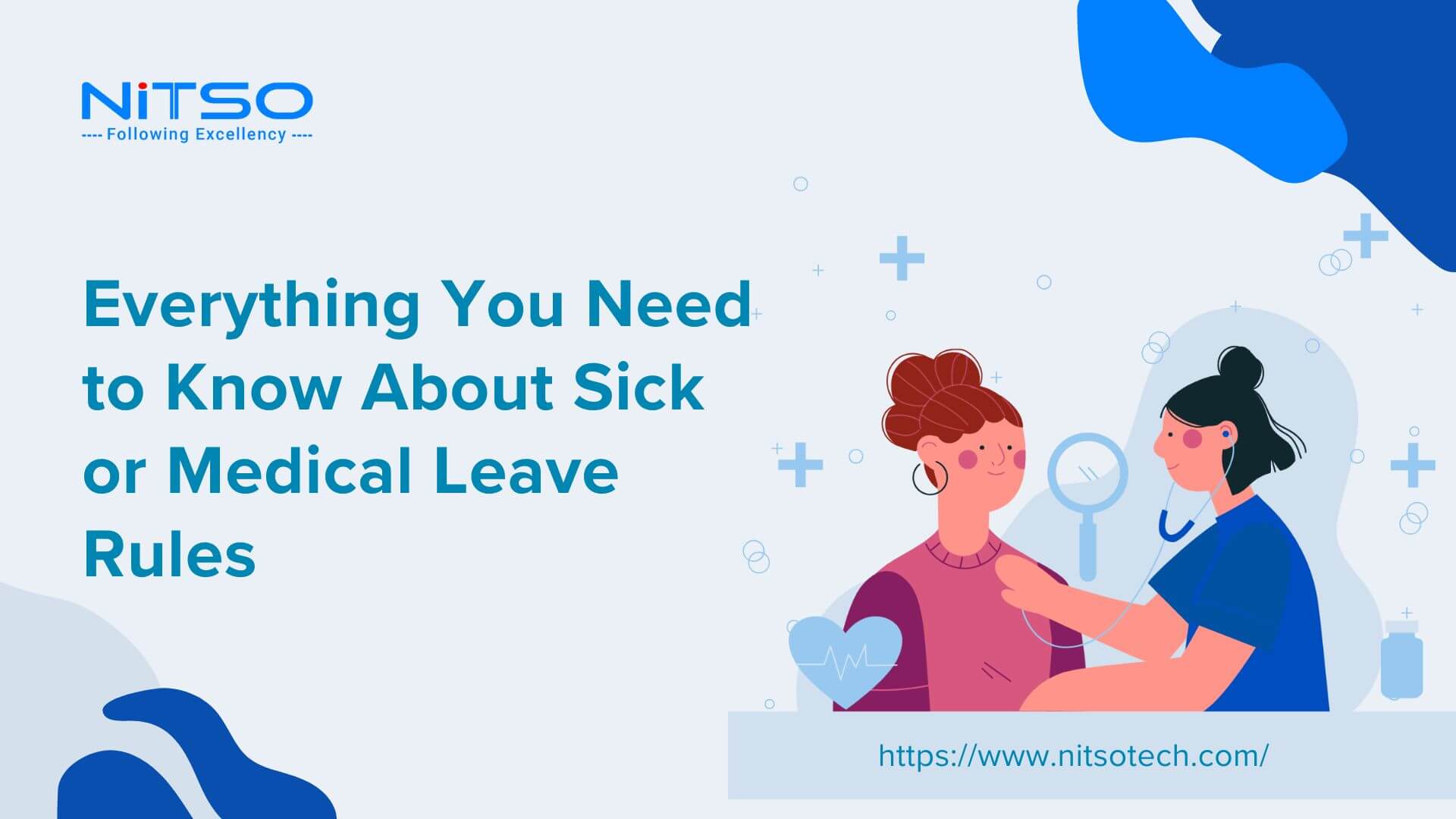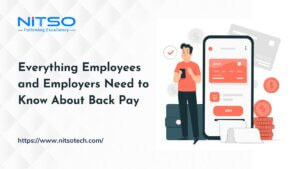Sometimes employees need to take time off work due to illness or to get medical treatment. Sick leave and medical leave are two common types of leave that allow employees to be absent from work for health reasons. It’s important for employees to understand the difference between sick leave and medical leave, the rules and procedures for requesting each type of leave, and their eligibility under company policies and government regulations.
In this article, we will compare sick leave and medical leave rules, discuss eligibility and requirements, provide sample sick leave application formats, and give tips for ethical use of leave benefits. Whether you need a sick leave certificate for a 3-day flu absence or are planning for upcoming medical leave, this guide will help you navigate your options.
Table of Contents
What is Sick Leave?
Sick leave refers to paid or unpaid time off work granted to employees for short-term illnesses, injuries, or medical appointments. Some key things to know about sick leave are:
- Sick leave is typically granted for minor health conditions requiring brief recovery of a few days up to a couple of weeks, such as seasonal flu, migraines, sprains and strains, upset stomach, dental procedures, doctor check-ups, etc.
- Many employers provide a certain number of paid sick days per year, outlined in their sick leave policy. For example, government employees may get 12 paid sick leave days annually.
- Sick leave is usually paid at the employee’s normal wage rate. Some companies require using allotted vacation/personal days before unpaid sick leave kicks in.
- Employees submit a simple sick leave application to request time off for illness. This may include selecting sick leave in an online HR software or submitting a leave form.
- Proof of illness may be required in the form of a medical leave certificate from a physician after 3+ consecutive sick leave days taken. The medical leave certificate validates the need for absence.
- Sick leave can be taken continuously or intermittently as needed. For example, an employee may take 2 sick days for a stomach virus, return to work, and then take 1 sick day for a doctor’s appointment the following week.
Following proper sick leave application procedures and rules is important to take necessary sick time ethically. Understanding sick leave policies prepares employees in case they need to submit sick leave emails or letter format requests to their manager.
What is Medical Leave?
Medical leave refers to extended time off from work granted to employees for major illnesses, injuries, or medical procedures requiring long recovery periods of weeks or months. Key characteristics of medical leave include:
- Medical leave is taken for serious medical conditions requiring in-patient hospitalization, intensive treatment, or prolonged recovery. Examples include cancer, stroke, major surgery, childbirth complications, etc.
- Medical leave is typically longer in duration than sick leave, ranging from several weeks to several months depending on medical needs. Some types of medical leave can last up to one year.
- Eligibility requirements may apply for medical leave under government regulations like FMLA or equivalent state laws. Employees may need to meet tenure and hours worked requirements to be eligible for the requirements to apply for medical leave under government regulations.
- Medical leave may be paid or unpaid depending on the employer’s policies and applicable medical leave laws.
- Employees must submit a formal application for medical leave detailing expected leave duration, treatments, recovery timeline, and other details. Supporting documentation from a physician is required in this case.
- Medical recertification may be required periodically for extended medical leave. Employees must provide status updates from their doctor.
- Medical leave can be taken continuously or intermittently as needed for treatments.
Difference Between Sick Leave and Medical Leave
The main differences have to do with the severity of the condition, duration of leave, application process for sick leave formality, eligibility terms, and whether government regulations beyond standard company policies come into play. Understanding these key differences helps employees request the right type of leave. Difference Between Sick Leave and Medical Leave
| Sick Leave | Medical Leave |
|---|---|
| Short-term leave for minor illnesses or appointments | Extended leave for major medical conditions |
| Typically paid time off | May be paid or unpaid |
| Duration of a few days up to 1-2 weeks | Duration of 4 weeks or more, up to 1 year |
| Common uses: doctor visits, cold/flu, migraines, minor injuries | Common uses: surgery, cancer treatment, childbirth recovery |
| Informs manager, submits simple leave form | Formal application process, physician documentation needed |
| Eligibility based on sick days allowed per year | Eligibility may require minimum tenure and hours |
| Intermittent leave allowed | Can be an intermittent or continuous block |
| Less stringent documentation requirements | Ongoing recertification of need may be required |
| Standard company sick leave policy applies | Government medical leave laws may also apply |
Indian Government Laws for Sick Leave and Medical Leave
The regulations surrounding sick leave and medical leave differ between private sector companies and government organizations in India.
1. Sick and Medical Leave rules for private sector employees:
- Companies set their own sick leave and medical leave policies. There is no universal mandate.
- Some firms choose to align with the Earned Leave rules under the Factories Act of 1948, providing 1 day of paid sick leave for every 20 days worked, up to a maximum of 18 days annually.
2. Sick and Medical Leave rules for central government employees:
- Employees get a maximum of 15 days of paid sick leave per year under the Central Civil Services (Leave Rules) Act of 1972.
- For prolonged illnesses, up to 24 months of medical leave can be granted under Rule 42 of the above act.
3. Sick and Medical Leave rules for state government employees:
- Sick leave regulations vary by state. For example, Maharashtra civil servants get 12 days of paid sick leave annually.
- Medical leave eligibility and maximum duration may also be outlined in state-specific rules.
4. Sick and Medical Leave rules for students at government schools and colleges:
- Students may take sick leave by informing their class teacher or respective head of department and providing a medical certificate.
- Government college hostels typically allow 7-10 days of sick leave if supported by a medical leave certificate.
- For extended illness, students may formally apply for medical leave by submitting an application for medical leave and medical leave certificates.
- Each educational institution may have specific procedures regarding sick or medical leave applications that students must follow.
5. Sick and Medical Leave Rules for students at private schools and colleges:
- Private institutions set their own leave policies for students.
- Minor illnesses may deserve a few days of sick leave with a parent/doctor’s note.
- Medical leave application requires a formal request with medical leave certificates and approval from the administration. Leave duration allowed, requirements, and process differ between schools. Students should consult the student guide.
Grounds on Which Employees Can Be Granted Sick Leave
There are various valid reasons for needing sick leave from work. Common grounds for approving sick leave include:
- Contagious illnesses like seasonal flu, cough/cold, chickenpox, conjunctivitis, etc. Staying home prevents the spreading of the infection at work.
- Medical appointments and preventative care visits during work hours, including doctor check-ups, dental cleaning, eye exams, physical therapy, counselling, etc.
- Temporary injuries and illnesses like sprains, migraines, gastroparesis, kidney stones, bronchitis, etc. which impair the ability to work.
- Surgeries requiring recovery time away from work such as hernia repair, laparoscopy, orthopaedic procedures, tonsillectomy etc.
- Hospitalizations for illness, injury, or medical testing like endoscopy/colonoscopy, surgery, emergency treatment, etc.
- Pregnancy care needs include prenatal doctor visits, illnesses, childbirth recovery, and lactation support visits.
- Chronic medical conditions which periodically flare up and make working difficult like autoimmune disorders, mental health issues, irritable bowel syndrome etc.
- Medical procedures requiring preparatory time off work the day before, like colonoscopy bowel prep.
- Side effects from treatments or medications that impair work ability, like chemotherapy, physical therapy etc.
Employees dealing with contagious illnesses should not report to work. Taking sick leave for other health issues or medical requirements listed above are also perfectly valid reasons.
Employees should inform managers as soon as possible when sick leave is needed and follow company policy for providing doctor’s notes or medical leave certificates to justify the leave.
Abuse of Sick Leave
While sick leave is intended to be used judiciously for legitimate illnesses, unfortunately, some employees misuse sick leave policies. Common forms of sick leave abuse include:
- Taking sick leave when not actually ill, such as extending weekends, holidays, or vacation time off.
- Calling in sick but pursuing alternate activities like a side job, leisure events, travel, etc.
- Faking or exaggerating minor illnesses to take unwarranted days off.
- Using paid sick leave to accommodate a routine errand or appointment unrelated to sickness.
- Taking recurrent sick leave on particular days of the week which becomes a pattern.
Sick leave abuse negatively impacts workplaces with reduced productivity, profitability, and team morale. Other effects include:
- Increased workload for colleagues covering absent employee’s duties.
- Scheduling difficulties and postponed deliverables when employees call out sick unexpectedly.
- Strained management relations and mistrusted policies.
- Challenges staffing for time-sensitive projects or customer commitments.
To curb abuse, employers implement measures like requiring medical certificates after 2-3 sick days used, or only providing earned paid sick leave annually.
It is unethical to lie or exaggerate sickness solely to skip work. Employees should self-monitor the use of allocated sick days and reserve them for legitimate illnesses. With responsible use, sick leave offers important support to staff when health issues arise.
Article you might be intrested in: Leave Without Pay (LWP)
How to Ask for Sick Leave or Medical Leave
Knowing how to properly request sick leave ensures you follow workplace protocols. Here are some tips:
- Review your company’s medical or sick leave policy so you understand notification procedures, the documentation required, and your allotted paid sick days per year.
- Give your manager as much advance notice as possible by calling or emailing. Even if you wake up sick, try to let your manager know at least 1-2 hours before your shift.
- For scheduled appointments requiring sick leave, provide several days or week’s notice by submitting the medical or sick leave application in advance.
- Provide details on the reason for leave, expected duration, and impact on workload. For example: “I have a severe stomach flu and need to take 2 sick days to recover. I was supposed to complete the monthly reports, may I have an extension?”
- Use the proper format for sick leave requests preferred by your workplace. Some use online absence management portals, while others take email requests. There may be a standard sick leave application form.
- Follow any requirements about providing medical certificates or doctor’s notes. These validate illnesses and appointments requiring sick leave.
- Be truthful about the reason for sick leave. Do not exaggerate symptoms or make false claims about doctor visits.
With proper communication, documentation, and honesty, requesting sick leave does not need to be stressful for employees or managers. Being mindful of company policies prepares you to take appropriate sick leave when the need arises.
Article you might be intrested in: Full and Final Settlements in Payroll: Everything You Need to Know It
Options for Taking Sick Leave or Medical Leave
When an illness arises, employees have options in how they structure their sick leave or medical leave:
- Paid or Unpaid: For sick leave, companies typically provide a set number of paid sick days per year, after which leave becomes unpaid. Medical leave may be paid, unpaid, or partially paid depending on employer policies.
- Continuous or Intermittent: You can take sick leave or medical leave in an unbroken stretch of days/weeks, or intermittently as needed for periodic appointments and treatment sessions.
- Full or Partial Days: Depending on needs and employer approval, sick or medical leave may be taken in full-day or partial-day increments.
- Substitution with Other Leave Types: Some companies require using allotted vacation/personal days before unpaid sick leave, or integrating sick leave with short-term disability coverage.
- Advance Request or Call in: Sick leave can be requested in advance for planned events like surgery, or called in when unexpected illness occurs.
Employees should strategically assess which sick leave or medical leave options work best for their situation while keeping in mind workplace policies. Communicating with managers and HR can help identify the optimal leave arrangement.
Application Methods for Sick and Medical Leave
Here are some common ways that employees can apply for sick leave or medical leave:
- Company leave management system – Many companies have online portals where employees can submit leave requests, upload medical documents, and track their status.
- Sick leave email request – Employees can email their manager or HR department with details of the leave needed and attach any doctor’s notes.
- Physical leave application form – Some workplaces have standard paper application forms that employees fill out and submit to management.
- Phone notification – For sudden illnesses, employees may call their manager to verbally request sick leave. Follow-up documentation is usually required.
- Government organization portal – Public sector employees may have dedicated government websites to apply for sick leave or medical leave.
- Letter format – A formal written letter with the date, manager name, leave details, and doctor’s notes can serve as an application for sick leave or medical leave.
- Verbal request – For very small companies, employees may simply verbally discuss leave plans with their manager or HR contact.
The exact application for sick or medical leave method depends on the organization’s size, resources, and protocols. Employees should consult their company policy or manager to determine the appropriate way to submit sick and medical leave requests.
Article you might be intrested in: The Ultimate Guide to Maternity Leave in India – Duration, Pay, Rules and More
Conclusion
Sick leave and medical leave offer important benefits for employees facing health issues. Understanding the difference between sick leave and medical leave, and carefully following workplace policies, ensures you can take appropriate time off while preventing abuse of leave. With proper administration, leave policies can support employees through illnesses without negatively impacting the workplace.
FAQs Related to Sick & Medical Leave
What is paid sick leave, and what is its purpose?
Paid sick leave is time off from work granted by an employer for employees to take when they are ill or need medical care. The purpose is to allow employees to stay home to recover when sick and attend medical appointments without losing pay or risking their employment status.
How many sick days leave?
The number of paid sick days offered per year varies by employer and local laws. Most companies provide 5-10 sick days annually. Government mandates like state PSL laws may also impact sick day minimums.
How many sick leave in a year?
Again this depends on the employer, but commonly employees are given 6-12 sick leave days per calendar year or accrued year. Some progressive companies offer unlimited sick days.
How can I ask for sick leave from my boss?
Notify your boss as soon as possible, ideally before your shift, via phone/email/text. Explain you’re sick or have a medical appointment and need to take X days of sick leave. Follow any required procedures like submitting a leave request form.
How can I take a 2-3 months sick leave from my company?
For extended medical leave, submit a formal leave request to your HR with doctor documentation supporting the need for continuous leave. Ensure you comply with company policy and eligibility terms for long medical leaves.
What is the best excuse for a one week sick leave in IT?
Faking illness is unethical. If genuinely need a 1-week break for health reasons, be transparent with management and provide a doctor’s note validating the need for leave.
Can an employer challenge a medical certificate?
Yes, employers can follow up with the doctor who issued the certificate or have the employee get a second opinion, if they suspect abuse of sick leave or have concerns about the validity.
What are the reasons for a sick leave at a job?
Valid sick leave reasons include contagious illnesses, medical appointments/procedures, temporary injuries/conditions, chronic disease flare-ups, surgery recovery, severe morning sickness, and side effects from medications/treatments.
What happens when workers don’t get paid sick leave?
Without paid sick leave, workers may come to work ill risking the health of others. They may lose pay to take off sick which creates financial hardship. Some may be forced to resign if extended leave is needed but unpaid.
Is it possible to take sick leave without giving a reason?
Most companies require some documentation or explanation to justify sick leave. However, employees are not obligated to disclose their specific illness if it’s a private health matter.
Is termination on sick leave in India legal?
If an employee on approved medical leave is unlawfully terminated, they can challenge this in court under labour laws prohibiting wrongful termination. Reasons and sufficient notice must be provided.
Can a sick leave be denied?
Sick leave can be denied if the employee does not follow company policy or eligibility criteria, or if evidence indicates abuse/dishonesty about the stated reason for leave. Denial should have valid grounds.








0 Comments